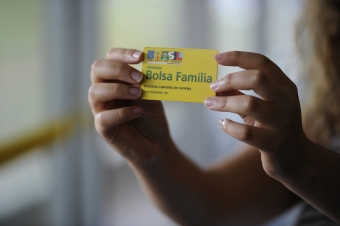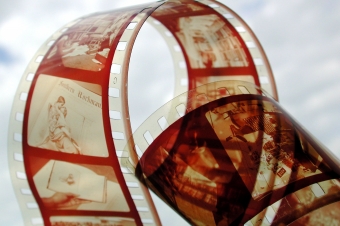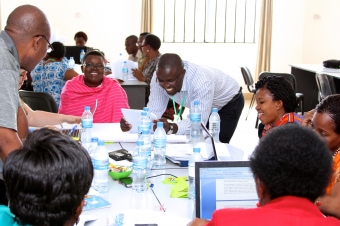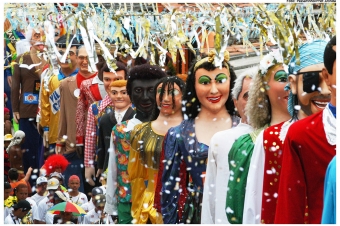Summary:
The activity that develops communication skills in written and oral in Portuguese by conducting simulated literary juries. The students must read classic works of the Portuguese literature and turn them into jury cases, preparing prosecution and defense arguments. In the end, it is intended that they be able to apply the language skills and contextualize the basic conceptual notions in their practice.
Objective:
- GENERAL GOAL: the activity developed the use of Literary Simulated Juries as a pedagogical practice transdisciplinary of success in Law Course of the International University Center, UNINTER. The importance of this project is to have been able to unite the educational needs of the Portuguese, Legal Writing, Interdisciplinary work, Introduction to the Study of Law classes to a synergistically and excellent results, proven by the great commitment and participation of the students in the first period of the course of Law and to the own academic community, that accompanies each literary semester simulated juries with a growing interest. It was look to make the freshmen students of the Law Course create an interest by the correct use of the language of a reading of the classics.
- SPECIFIC GOALS: the first major goal of the project is to develop communication skills of written and spoken in Portuguese in a problem situation. In addition to the development of constitutive operations of the organization so argumentative discourse, the course wants to enhance and improve the dynamic use of the word in the practice of the law. All of these through the study of a literary work that turns into a jury. The activity works the legal reasoning, reading, introduction to the study of law, jury notions and legal research.
- DEVELOPED ABILITIES: the realization of simulated juries, based on data taken from literary, involves the discussion and application of language skills, legal theorists, providing scholars a broader and objective view of the market that they will work. It also provides participants with a contextualized understanding of the basic conceptual notions of running a simulated jury. More importantly, the literary simulated jury project's communication focuses on a written and oral communication, and it consists, in general, in the realization of a set of activities that provide students with the first sentence of Law Course time and space for building their identity searched through a professional practice. It is intended that the student can extract text.
Dynamics:
- TEACHING METHOD: simulation, through role-playing in jury
- REQUIREMENTS: in relations to the students, the preparation is the choice of classic reading and doctrines of research, legislation and jurisprudence. In relation to the professor, at first, she chose a classic literary work of the Portuguese language that give a further opportunity to address some aspects of Law and presented to the students of the classes of the first period. Using an integrated and very interested way the professors od the Law Course accompanying the elaborations of pleadings and the argumentative principles of the classes, building a transdisciplinary academic position. Over time that it was applied the dynamics, the following books were chosen:
1º. O Pagador de Promessas, Dias Gomes
2º O Mandarim, Eça de Queirós
3º Luzia-Homem, Domingos Olímpio
4º Inocência, Visconde de Taunay
5º O Beijo No Asfalto, Nelson Rodrigues
6º Angústia, Graciliano Ramos
- DYNAMICS: At the beginning of each weekly class, a student read a chapter or a few pages of the book to the class. Then, the students talked with professors about what was read, looking for some defensive or accusatory inherent literary simulated jury arguments (What are the arguments presented in classical literary work that can be used as evidence for the defense or prosecution of the defendant?). The project is divided during the semester. There are 80 hours/classes on the course, and it is worked on five or six classes preparing the activity, the jury is presented in three hours. In the first classes it is great the difficulty in understanding the reading, both by a lack of habit, as well as the vocabulary deficiency, and even to the inability to concentrate. However, with the evolution of the exercises these difficulties are visibly overcome. During the semester, the students are mounted by the students the defense and prosecution arguments. For this, the deepening of reading is needed, which "forces" the scholars to extrapolate reading only this work and from the search for grants from other sources, mainly other legal and literary books.
After the work study by the students, and chosen the crime that goes to judgement, it is open the enrollment for the prosecution or defense roles of the character identified as a defendant of the case study. Additionally, from that moment their prosecution and defense theses are prepared by each team.
It is Important to note that all material is developed, produced, collected and systematized by the students in order to foster the collective construction of knowledge of real, concrete, contextualized and mainly autonomous. The completion of the simulated jury occurs in an event open to university.
- ATTENTION IN THE CLASSROOM: the professor should make a good choice of literary work that will be brought to the jury. He or she should be aware of the competition among students, and show that the dispute is between ideas and not between people, this is common in the processes. Adaptations in the realization of the jury, such as to judge only if the defendant is guilty or innocent. The class should stay focused on the arguments. All tests must be linked to the literary work: death certificate, psychological report, and proof of properties, among others.
Evaluation:
- FEEDBACK: during the meetings and after the presentation of the jury.
- GRADE EVALUATION: The activity corresponds to approximately 40% of the bimester’ grade. The construction of the grade is made collectively. They participate in the decision of how much each student should receive. After the presentation of the jury, the students meet with the professor and discuss the performance of each one collectively. It discusses who had greater engagement, who had evolution in the process. A grade was given to each participant, including the professors. It also decides collectively if each grade will be effective or not.
Observation:
There is a page on Facebook jury held at the 1st semester of 2015: https://www.facebook.com/pages/J%C3%BAri-Simulado-Uninter/82794786059379...
The photos of the event, filming and interviews are posted at this address.
Copyright from the cover page image (cropped):
Image: "Music and Literature", 1878, artist: William Michael Harnett. Image on public domain Available by the Wikimedia Commons user "MarmadukePercy"






